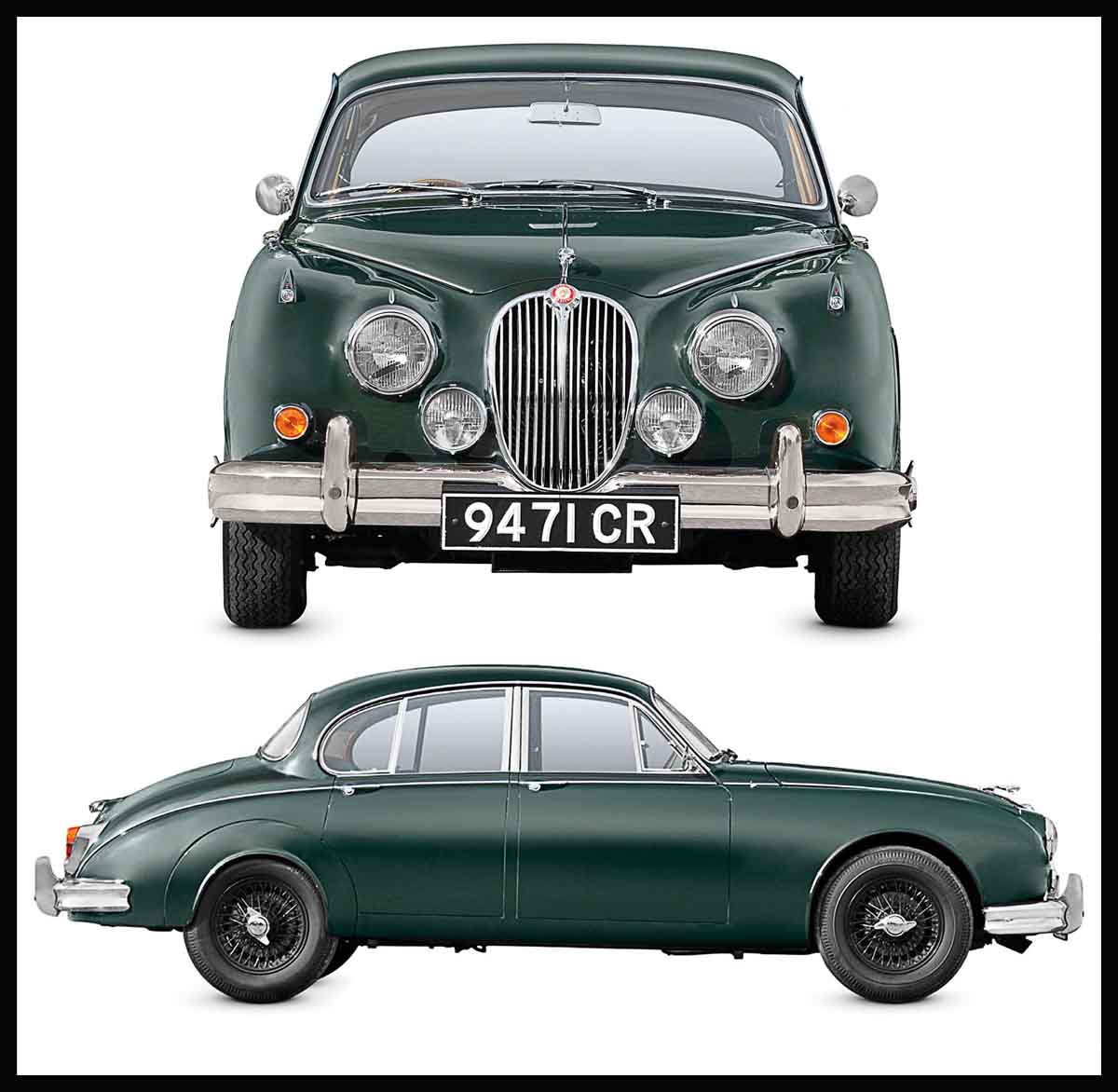
Sports Saloons
Performance had always been the preserve of open roadsters, but by the 1960s sports saloons were gaining ground. This inroad was fuelled by car-makers such as Ford and BMC turning out tuned versions of their family cars that made a good base for a circuit racing or rally competitor. Saloons were becoming more sophisticated, too, with disc brakes and independent suspension more common, and the adoption of light, stiff monocoque structures. It was all good news for drivers who wanted not just to enjoy their motoring but also to share it with a few friends.
Jaguar Mk 2, 1959
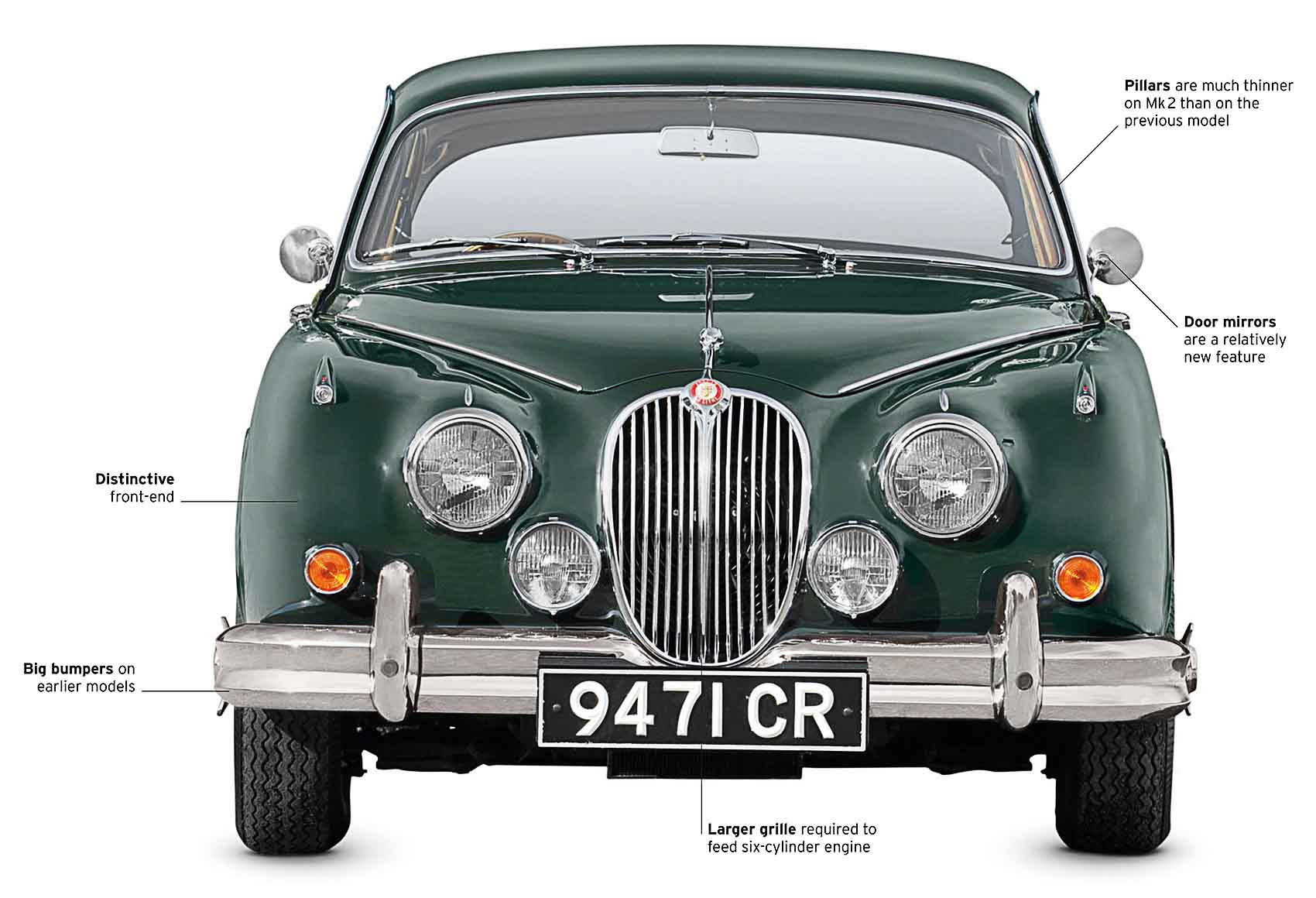
| Origin | UK |
| Engine | 3,781 cc, straight-six |
| Top speed | 125 mph (201 km/h) |
For many, this lithe Jaguar was the epitome of the 1960s’ sports saloon. The 3.4 liter was more popular on the road, but the 3.8 was a great saloon racer. It was the favorite of 1960s’ getaway drivers, who would steal examples fitted with car club badges, as these were the best maintained.
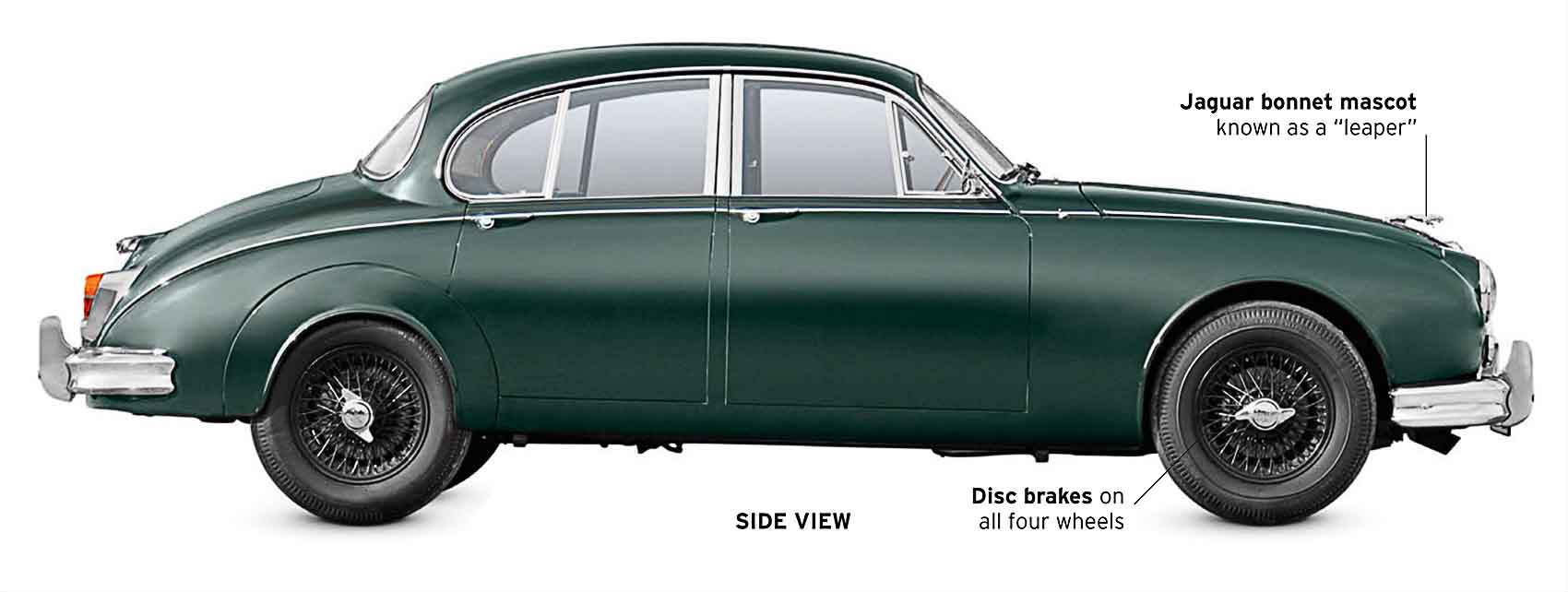
Versatile Monocoque
The Mk 2’s monocoque body was also used for the Daimler V8-250. With the addition of independent rear suspension and some restyling, it was used yet again in the Jaguar S-type and 420.
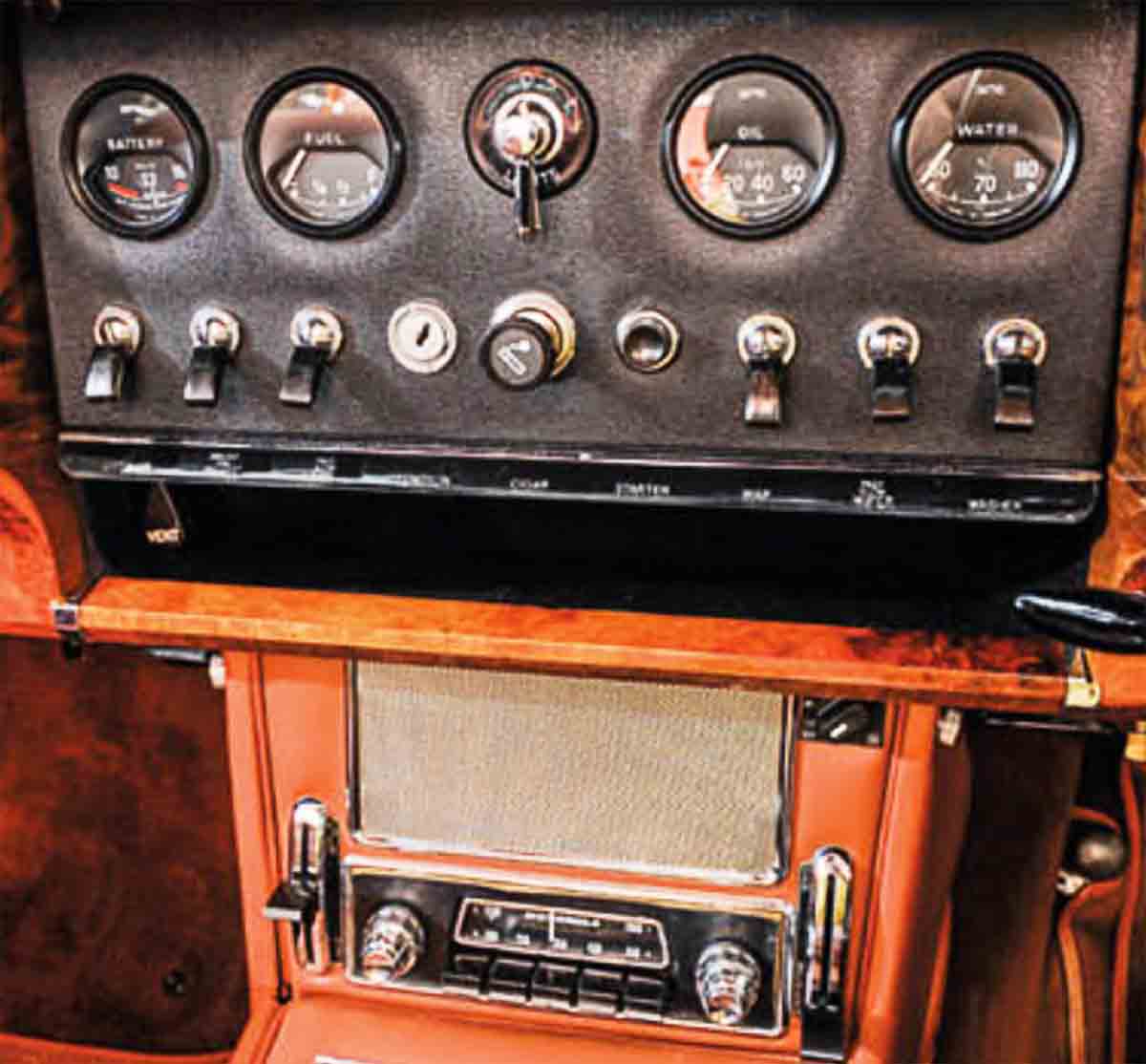
Impressive instrumentation
Jaguars always blended style and substance, and the well-stocked dashboard was designed not only to look good but also to present useful information to the driver. The speedometer and tachometer were directly in front of the driver, with auxiliary gauges, light switch, accessory switches, and the ignition switch located at the centre.
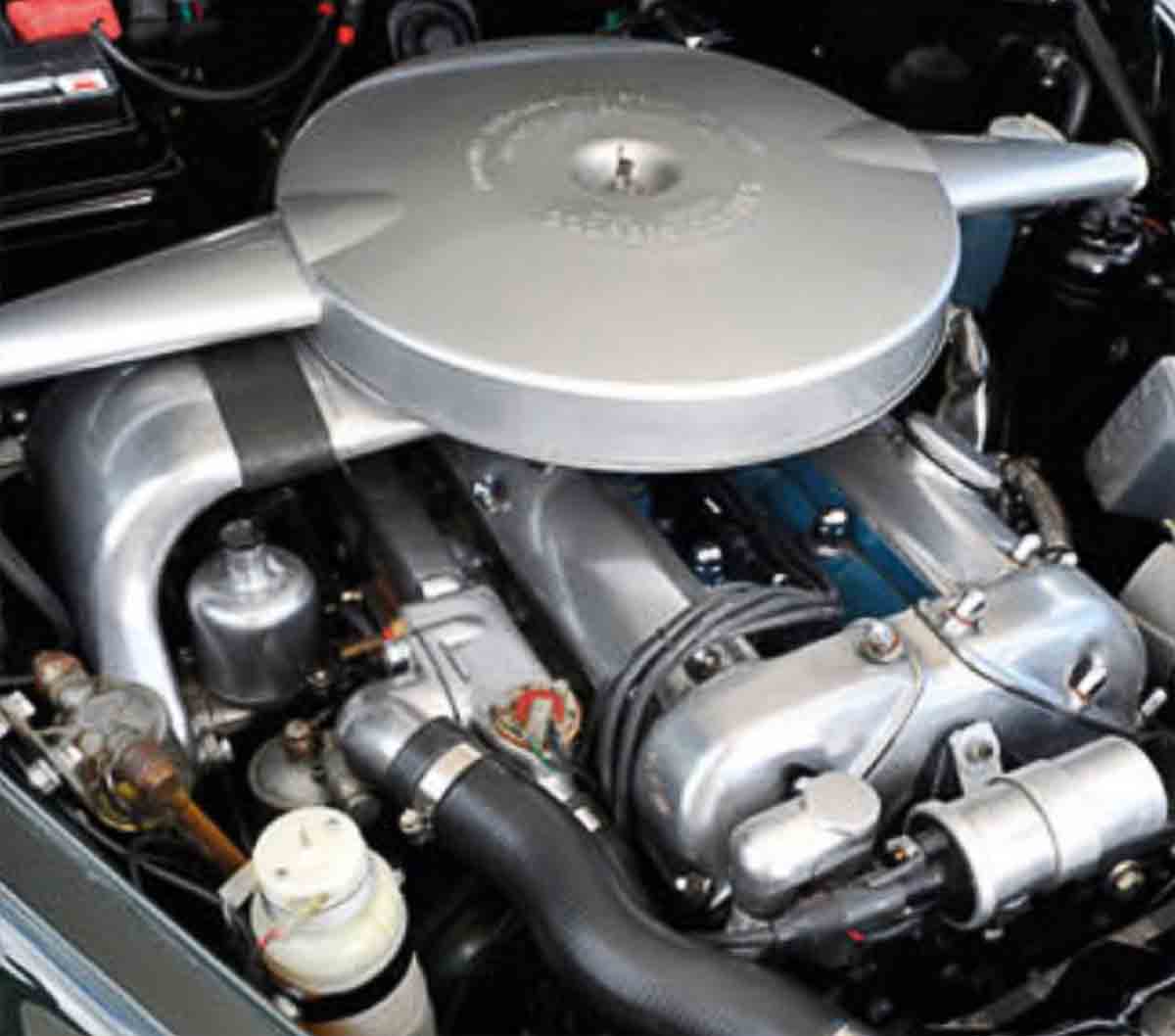
Smooth six
Mk 2’s were available with three versions of Jaguar’s smooth, twin-cam, straight-six XK engine, in 2.4-liter, 3.4-liter, and 3.8-liter guises. The 3.8 had twin SU carburetors and a gross output of 220 bhp. The more powerful car was the enthusiast’s choice.
Austin / Morris Mini Cooper, 1961
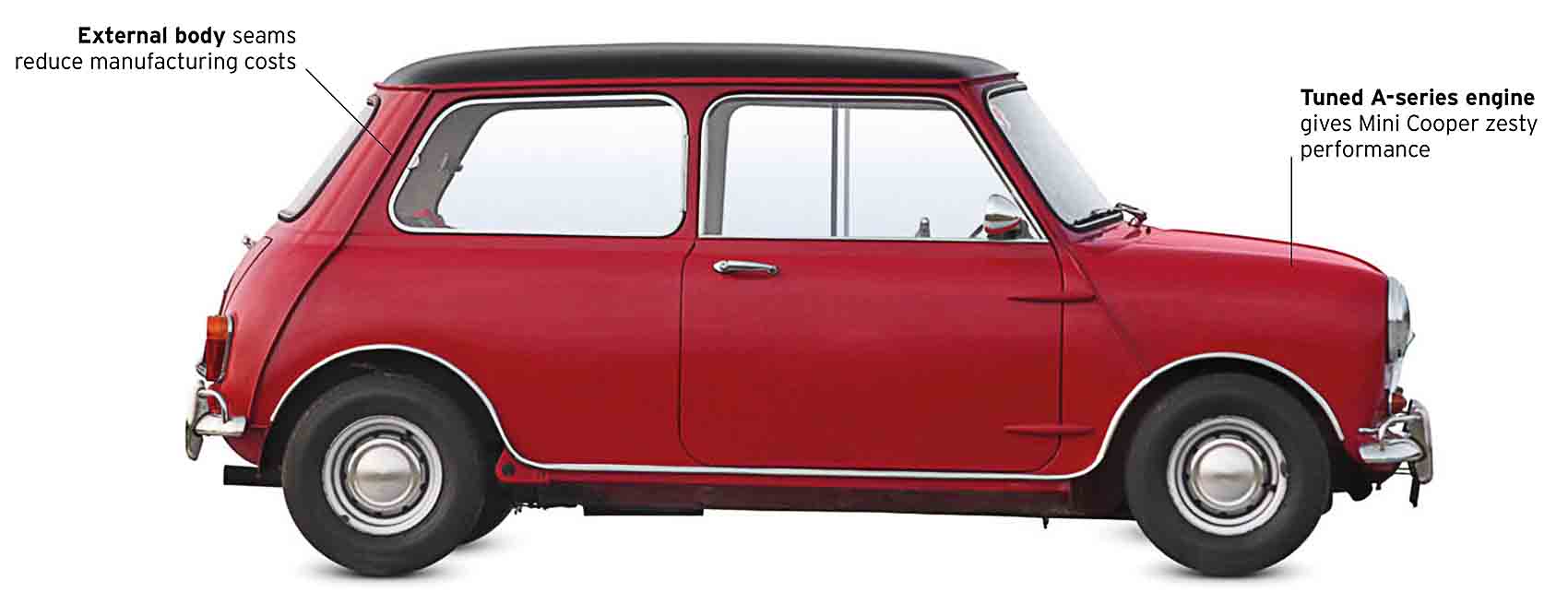
| Origin | UK |
| Engine | 1,275 cc, straight-four |
| Top speed | 100 mph (161 km/h) |
The Mini was never meant to be a performance saloon. Formula 1 boss John Cooper spotted its potential, tuning the car’s engines and adding disc brakes to exploit the Mini’s fantastic roadholding abilities. A multiple Monte Carlo Rally and British Saloon Car Championship winner, it was an exciting car for the open road.
Volvo 122S, 1961
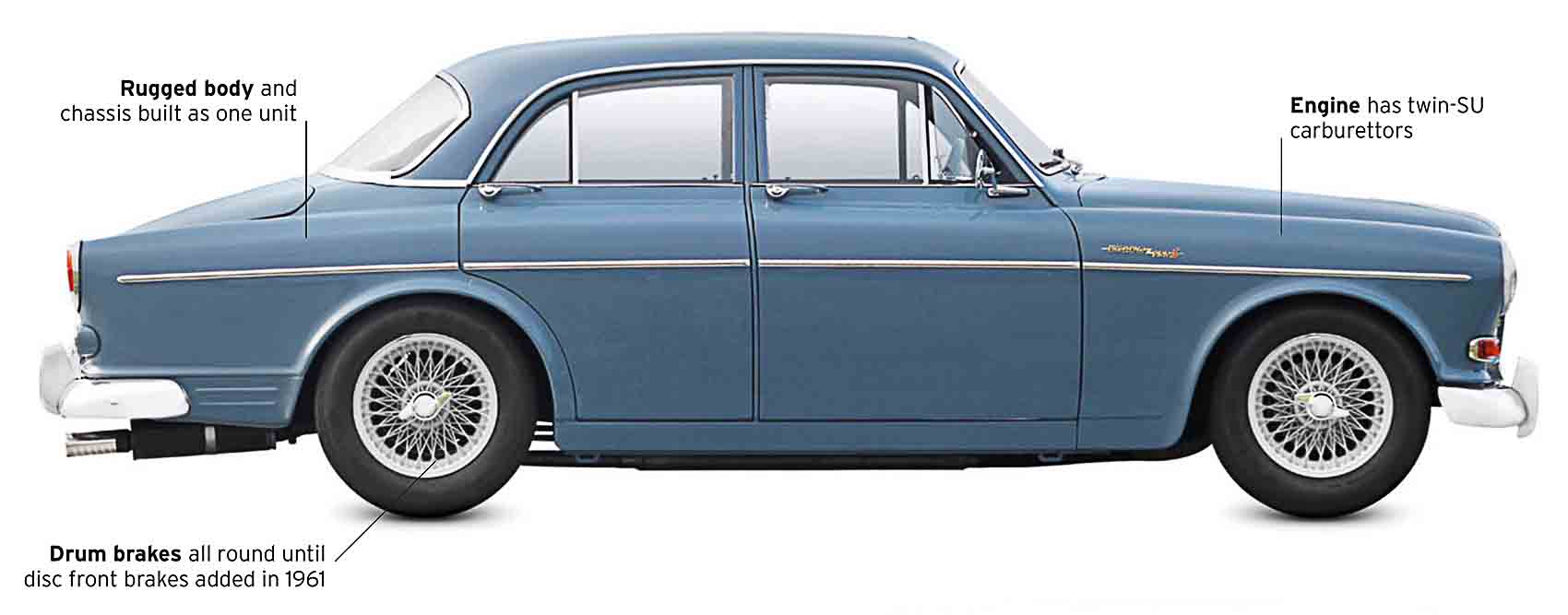
| Origin | Sweden |
| Engine | 1,778 cc, straight-four |
| Top speed | 100 mph (161 km/h) |
This was a rugged yet capable sports saloon car, with a twin-carburetor engine and 85 bhp. Later, a 123 GT with 100 bhp became available. These were spirited performers, especially when fitted with the optional overdrive. Designated by numbers in most markets, they were known as the Amazon in Sweden.
Renault 8 Gordini, 1964
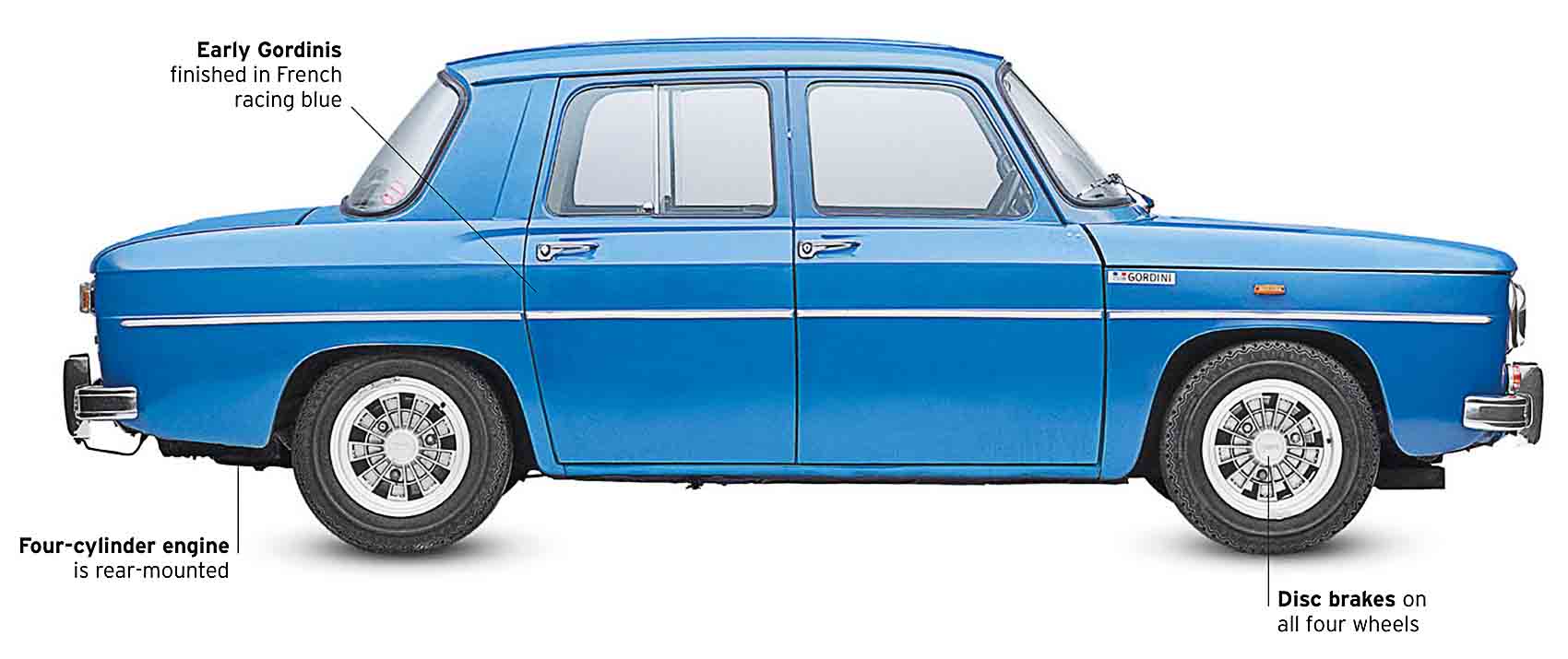
| Origin | France |
| Engine | 1,108 cc, straight-four |
| Top speed | 106 mph (171 km/h) |
The Gordini version of the R8 arrived in 1964, an upgrade from the regular, boxy model that had been released two years earlier. It offered 49 bhp from its 1,108 cc twin-carb engine, delivered through a close-ratio manual gearbox with four speeds (the regular R8 had only three).
Nissan Skyline GT-R, 1969
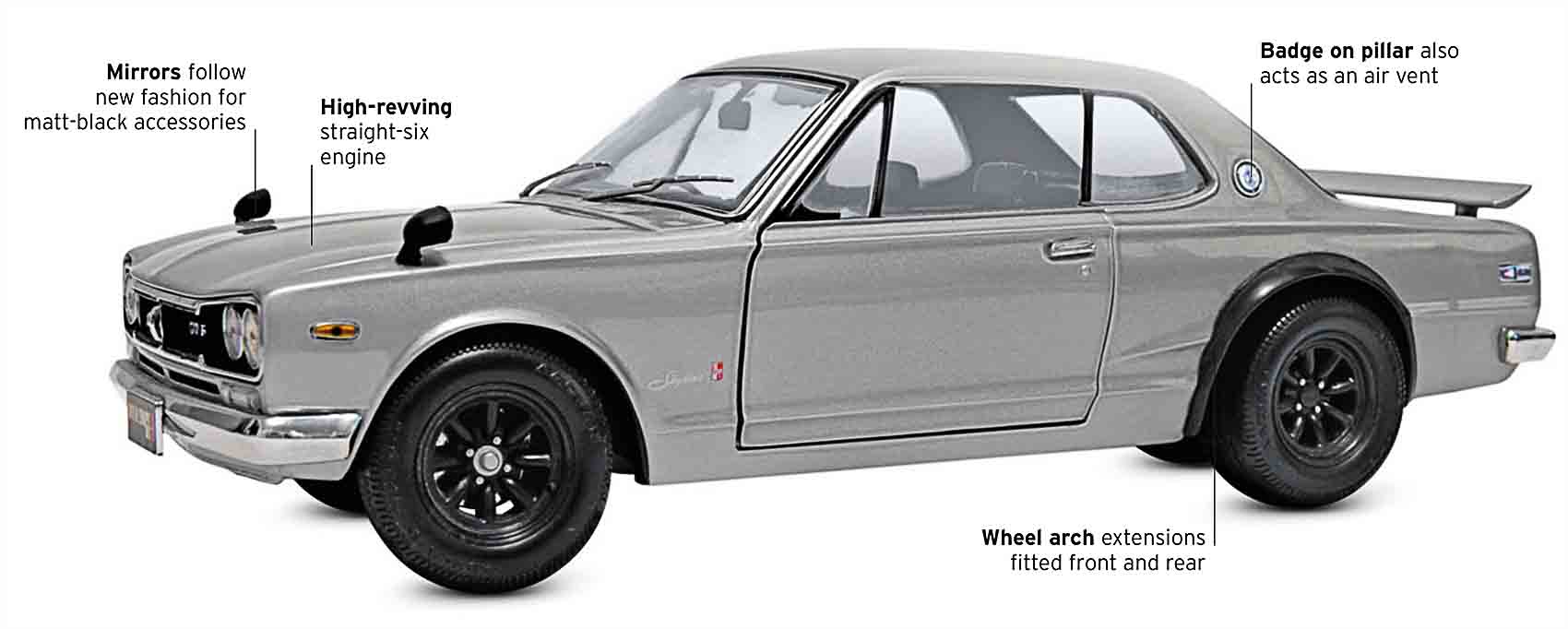
| Origin | Japan |
| Engine | 1,998 cc, straight-six |
| Top speed | 124 mph (200 km/h) |
The twin-camshaft engine in the GT-R turned the humdrum Skyline saloon into a serious race winner that notched up 50 race wins in its first three years. Power was delivered to the rear through a five-speed gearbox, and there was semi-trailing arm independent rear suspension.
It is a quote. The Classic Car Book – The Definitive Visual History 2016




